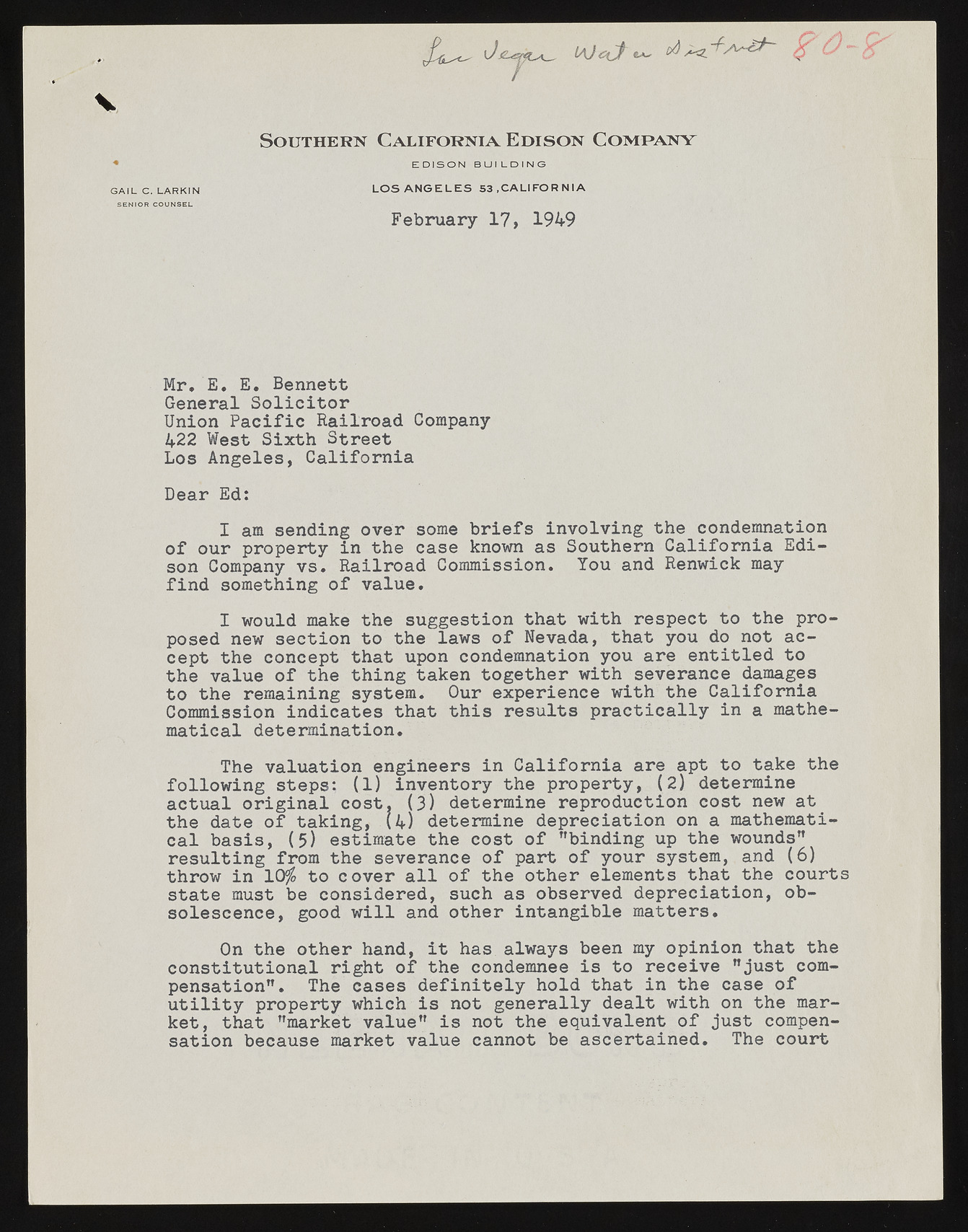Copyright & Fair-use Agreement
UNLV Special Collections provides copies of materials to facilitate private study, scholarship, or research. Material not in the public domain may be used according to fair use of copyrighted materials as defined by copyright law. Please cite us.
Please note that UNLV may not own the copyright to these materials and cannot provide permission to publish or distribute materials when UNLV is not the copyright holder. The user is solely responsible for determining the copyright status of materials and obtaining permission to use material from the copyright holder and for determining whether any permissions relating to any other rights are necessary for the intended use, and for obtaining all required permissions beyond that allowed by fair use.
Read more about our reproduction and use policy.
I agree.Information
Digital ID
Permalink
Details
More Info
Rights
Digital Provenance
Publisher
Transcription
G A I L C. L A R K I N SENIOR C O U N S E L S o u t h e r n C a l i f o r n i a . E d i s o n C o m p a n y E D I S O N B U I L D I N G L O S A N G E L E S 53 , C A L I FO R N I A February 17, 1949 Mr. E. E. Bennett UGneinoerna lP aScoifliicc itRoarilroad Company 422 West Sixth Street Los Angeles, California Dear Ed: I am sending over some briefs involving the condemnation of our property in the case known as Southern California Edison Company vs. Railroad Commission. You and Renwick may find something of value. I would make the suggestion that with respect to the proposed new section to the laws of Nevada, that you do not accept the concept that upon condemnation you are entitled to the value of the thing taken together with severance damages to the remaining system. Our experience with the California Commission indicates that this results practically in a mathematical determination. The valuation engineers in California are apt to take the following steps: (1) inventory the property, (2) determine actual original cost, (3) determine reproduction cost new at the date of taking, (4) determine depreciation on a mathematical basis, (5) estimate the cost of "binding up the wounds" resulting from the severance of part of your system, and (6) throw in 10$ to cover all of the other elements that the courts state must be considered, such as observed depreciation, obsolescence, good will and other intangible matters. On the other hand, it has always been my opinion that the constitutional right of the condemnee is to receive "just compensation”. The cases definitely hold that in the case of utility property which is not generally dealt with on the market, that "market value” is not the equivalent of just compensation because market value cannot be ascertained. The court

